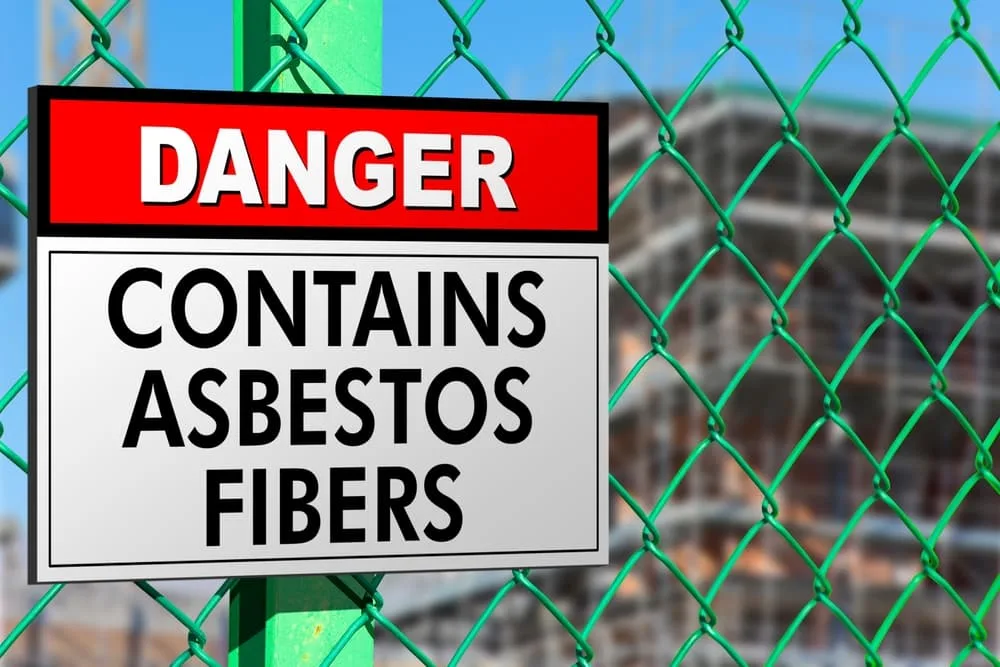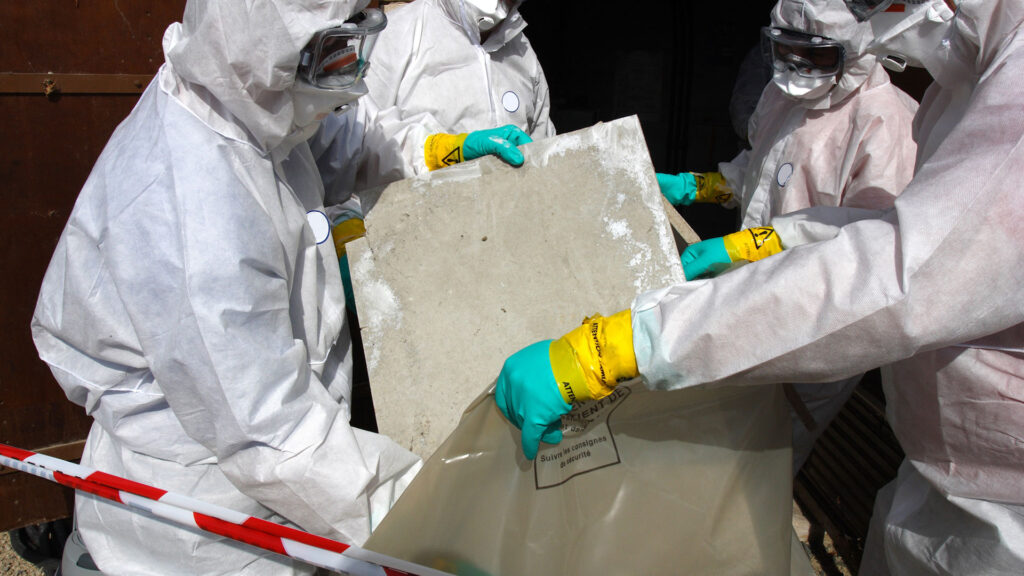Asbestos exposure is the primary cause of mesothelioma, accounting for up to 80 percent of all cases. Asbestos is a group of naturally occurring fibrous minerals widely used in various industries for their heat and fire resistance and insulation properties. The inhalation or ingestion of asbestos fibers can lead to mesothelioma.
While some individuals develop mesothelioma without any apparent asbestos exposure, most of these individuals did not know about their asbestos exposure, according to the National Organization for Rare Diseases. Seek peace of mind and rightful compensation—consult an experienced Chicago mesothelioma attorney for expert guidance and support throughout your journey.
What Is Mesothelioma?

Mesothelioma is cancer that develops in the thin layer of tissue known as the mesothelium. The mesothelium is a protective lining that covers several internal organs in the body, such as the lungs, abdomen, and heart.
There are four types of mesothelioma:
- Pleural mesothelioma is the most common type, affecting the pleura (lining of the lungs). It can cause chest pain, shortness of breath, coughing, and fatigue.
- Peritoneal mesothelioma affects the peritoneum (lining of the abdomen). Symptoms may include abdominal pain, swelling, weight loss, and changes in bowel habits.
- Pericardial mesothelioma is a rare form of the disease. It occurs in the pericardium (lining of the heart). Pericardial mesothelioma can lead to chest pain, difficulty breathing, and heart palpitations.
- Testicular mesothelioma is an extremely rare form that affects the lining of the testicles. It often presents as a painless lump or swelling in the testicle.
Mesothelioma is known for its long latency period, meaning it can take decades for symptoms to develop after asbestos exposure. Because of this delayed onset, doctors often diagnose the disease at an advanced stage when treatment options are limited. Treatment approaches for mesothelioma can include surgery, chemotherapy, radiation therapy, and, in some cases, targeted therapies or immunotherapy.
How Does Asbestos Exposure Cause Mesothelioma?
Cancer, including mesothelioma, occurs when cell DNA is damaged and causes cells to grow out of control.
Asbestos is the primary cause of mesothelioma. When someone breathes in asbestos fibers, the fibers can travel to the end of the small air passages and reach the pleura — the protective lining around the lungs — and cause inflammation and scarring, and may damage cell DNA, leading to pleural mesothelioma.
When someone swallows asbestos fibers, the fibers can reach the abdominal lining, or peritoneal, and wreak the same havoc, leading to peritoneal mesothelioma.
Where Does Asbestos Exposure Occur?
Occupational asbestos exposure is the primary cause of mesothelioma. Some occupations pose greater risks of asbestos exposure, such as insulation workers, construction workers, miners, factory workers, electricians, servicemembers, and more.

Another group of individuals at risk are family members of those exposed to asbestos. For example, an industrial worker might come home from work without realizing that microscopic asbestos fibers cover his clothes. His wife routinely collects his laundry and becomes exposed to the fibers. She, too, risks developing mesothelioma.
Here are some common places where asbestos exposure can occur:
- Construction and renovation sites: Many buildings, including schools, hospitals, office buildings, and homes constructed before the 1980s contain asbestos-containing materials, such as insulation, roofing materials, flooring, and wall panels. Without proper safety precautions, renovation or demolition work on these buildings can release asbestos fibers into the air.
- Industrial and manufacturing settings: Asbestos was used in manufacturing industries for insulation and fireproofing in factories, plants, and refineries.
- Shipbuilding and repair: Ships built prior to the 1980s often used asbestos for insulation and fireproofing. Shipyard workers and Navy personnel involved in construction, repair, and maintenance of these vessels faced significant asbestos exposure risks. Workers in these industries were at risk of exposure.
- Military bases: Asbestos was also used in military bases, barracks, and other facilities for its fire-resistant properties, exposing military personnel during construction, maintenance, and service.
- Asbestos mining and processing: Asbestos was mined to obtain its fibers and processed for commercial use. Workers in asbestos mines and processing facilities were directly exposed to asbestos fibers.
- Automotive industry: Asbestos-containing materials were used in vehicles for components like brake linings, clutches, and gaskets. Mechanics and workers in the automotive industry could be exposed when repairing or replacing these components.
- Power plants: Asbestos insulation was used in power plants to protect against heat and fire. Workers in power generation facilities faced exposure during maintenance and repair work.
- Railroad industry: Asbestos was used in locomotives, train cars, and railway infrastructure for insulation and fire protection. Railroad workers could be exposed during maintenance and repair activities.
- Textile mills: Asbestos fibers were used in textiles, such as fire-resistant clothing and protective gear. Workers in textile mills and factories that produced asbestos-containing textiles were exposed.
Challenges Connecting Mesothelioma to Asbestos Exposure
Mesothelioma was linked to asbestos exposure as early as the 1940s, but the U.S. government didn’t put restrictions on its use until 1989. Despite 60 countries banning it worldwide, the U.S. still uses asbestos, though the Environmental Protection Agency has gradually tightened its restrictions on the mineral through the years due to the health risks.
One of the complexities of mesothelioma is that it can take 20 to 60 years after asbestos exposure for symptoms to present. Many people may forget or not realize their jobs exposed them to the known carcinogen decades prior. And despite knowing the dangers of asbestos exposure even before the EPA restrictions, few employers made any effort to protect workers or warn them of the risks.
Who May You Hold Liable for Causing Mesothelioma?
Mesothelioma is almost always caused by exposure to asbestos. As a result, many mesothelioma victims file lawsuits against companies that manufactured or used asbestos-containing products. You can hold these companies liable for the harm caused to individuals exposed to their products.
Some possible liable parties in a mesothelioma lawsuit include:
Employer
You may hold your employer liable for your illness if they failed to protect you from asbestos exposure. Employers must provide a safe working environment for their employees, and this includes protecting them from exposure to harmful substances such as asbestos. You can hold employers who knew or should have known about the dangers of asbestos liable for damages resulting from mesothelioma if they failed to take appropriate action to protect their employees. This can include compensation for medical expenses, lost wages, and pain and suffering.
Contractor or Subcontractor
Liability can extend beyond your direct employer. If working for a contractor or subcontractor exposed you to asbestos, you can hold them liable for your illness for the same reasons mentioned above.
Product Manufacturers
Product manufacturers have a responsibility to ensure that their products are safe and free from harm. In the case of mesothelioma, this means ensuring that their products do not contain asbestos. If a product manufacturer fails to ensure the safety of those who work around their products, you can hold them liable for any harm that their products cause.
You can hold product manufacturers held liable for failing to provide adequate warnings about the dangers of their products. This includes failing to warn consumers about the risks associated with asbestos exposure.
Premises Owners
Premises owners, including landlords, property managers, and building owners, may also be held liable for mesothelioma diagnosis if asbestos-containing materials were present in the building, and the premises owner knew or should have known about the presence of asbestos.
Premises owners must provide a safe environment for tenants, employees, and visitors. This includes ensuring that any asbestos-containing materials are properly maintained or removed. If the premises owner fails to take reasonable steps to prevent exposure to asbestos, you may hold them accountable for any resulting harm.
Asbestos Trust Funds
If a doctor diagnosed you or a loved one with mesothelioma, you may recover compensation from asbestos trust funds. Bankrupt asbestos companies created these trust funds to compensate victims of asbestos exposure.
To recover compensation from a bankruptcy trust, a company that has filed for bankruptcy and set up a trust fund for this purpose must have exposed you to asbestos. You must also have a mesothelioma diagnosis or another asbestos-related disease.
Each trust fund has its own set of criteria for eligibility and compensation. Some factors include the severity of your illness, the amount of asbestos exposure you experienced, and the length of time between your exposure and diagnosis.
Compensation from an asbestos trust fund rarely covers all of your medical expenses and lost wages. You may need to pursue additional compensation through a mesothelioma lawsuit or settlement.
If you believe you deserve compensation from an asbestos trust fund, speak with an experienced mesothelioma attorney. They can help you navigate the complex process of filing a claim and ensure you receive the compensation you deserve.
Contact a Mesothelioma Lawyer from Vogelzang Law Today

Asbestos exposure is the primary cause of mesothelioma, and those at greatest risk of developing this rare and aggressive form of cancer are those who worked with asbestos or products containing asbestos.
Employers and manufacturers of these products knew for decades how dangerous asbestos was, but many refused to warn workers or provide adequate protections. If doctors diagnosed you or a loved one with mesothelioma, you may recover compensation for your medical bills and other losses.
Pursuing compensation for a mesothelioma diagnosis through a bankruptcy trust or lawsuit can be complex and time-consuming. The team of mesothelioma and asbestos lawyers at Vogelzang Law can help you through this difficult time by handling all the legal aspects of your claim. Contact us today through our online form or at (312) 466-1669 for your free and confidential consultation.



